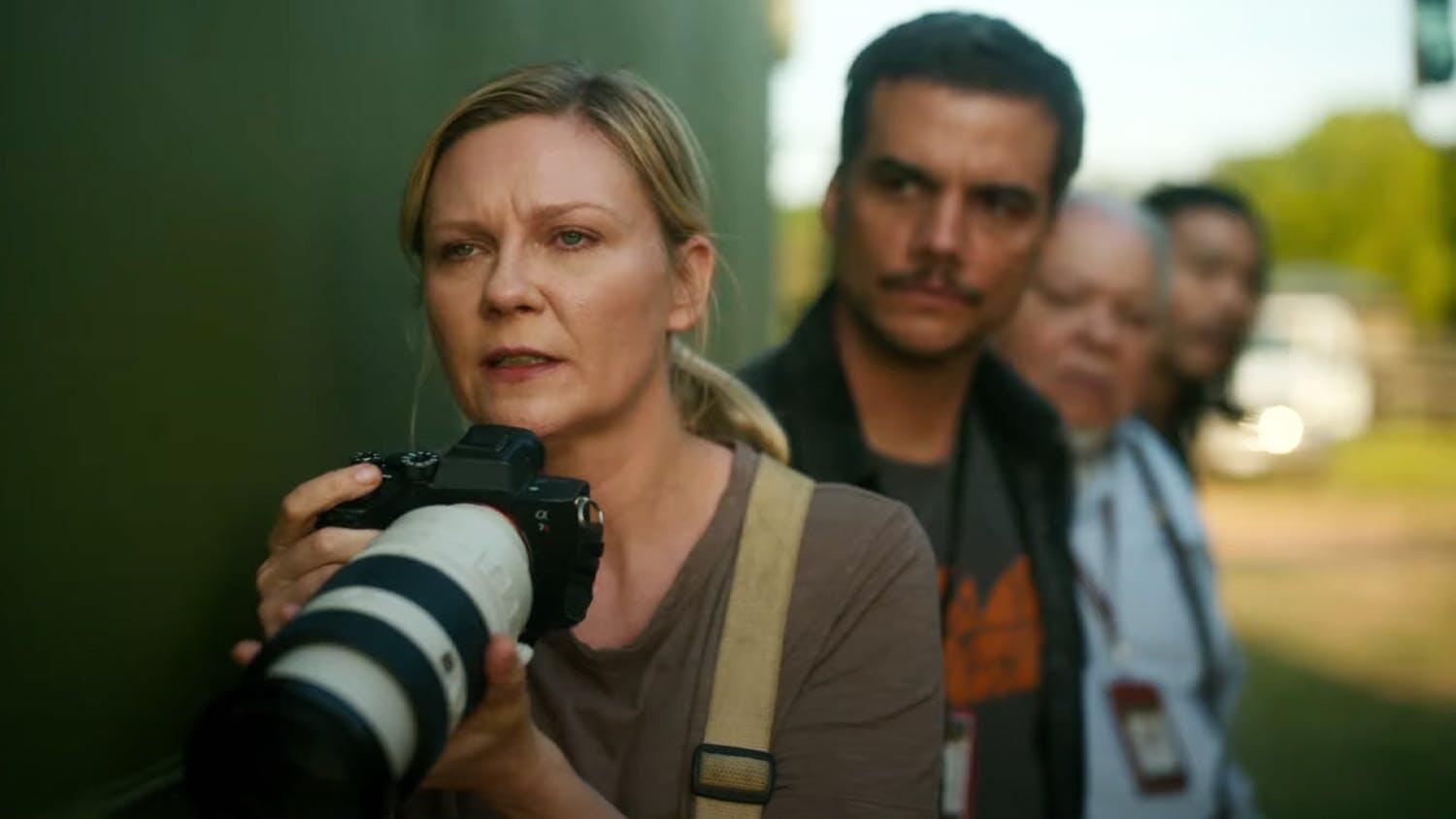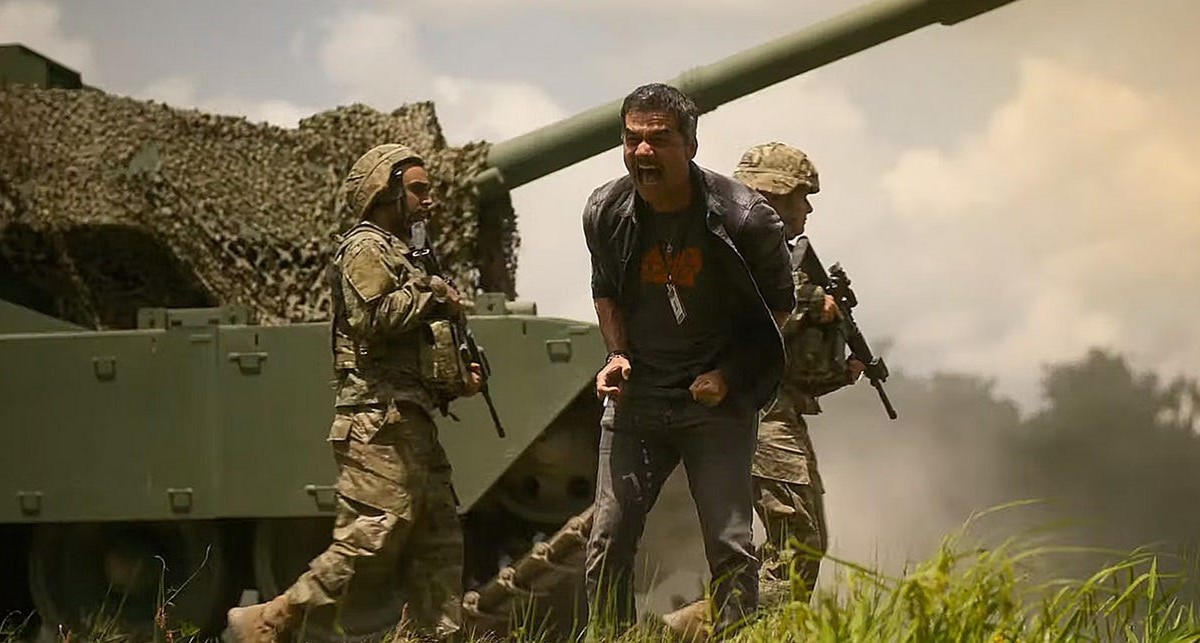by Pauline Kael
A friend of mine who’s in his early fifties and is eminent in his field says that when he grows up he wants to be Sean Connery. He doesn’t mean the smooth operator James Bond; he means the bluff, bare-domed Connery of The Man Who Would Be King and The Untouchables and now Indiana Jones and the Last Crusade. Connery’s physical presence is assured, contained, insolent; that’s what makes this burry Scotsman a masculine ideal. In The Last Crusade, Connery, in a droopy mustache and a trim grayish-white beard, is Indiana Jones’ scholar father, a medievalist who’s too engrossed in his studies to pay much attention to his daredevil son’s archaeological adventures. Tweedy and distracted, in the manner of a Victorian pedant, he’s the only surprising note in The Last Crusade.
“I look for humor in whatever I’m doing,” Connery has said, and he finds it here in his byplay with the man he calls Junior. Harrison Ford is a master of double takes, and Connery keeps occasioning them. He rags the two-fisted Indy as if he were still a kid, and uses paternal authority to outrank him—even to the point of slapping him in the face for using “Jesus Christ” as a swear word. Professor Henry Jones, Sr., is the only man alive who isn’t in awe of Indiana Jones. Each of the two stars carries associations from his past roles; their scenes together are so charged with personality that the atmosphere of parody is almost flirtatious. Connery isn’t a subtle actor, but as a presence he has phenomenal subtlety. And he can be silly: He can introduce little-boy mischief, and his masculinity is never in doubt. Amusing himself, he gooses this entire movie along. Ford is a little dull until he has Connery to play off. Then they nudge each other skillfully, and the director, Steven Spielberg, knows just when to cut to the father’s sheepish stare, the son’s wolfy grin. The Connery-Ford clowning distracts us from the doldrums of punches and chases and plot explication. The movie isn’t bad; most of it is enjoyable. But it’s familiar and repetitive—it’s a rehash. It makes you recall the old-Hollywood wisdom: If they liked it once, they’ll love it twice. The action simply doesn’t have the exhilarating, leaping precision that Spielberg gave us in the past (before he became apologetic about it). Great Spielberg action is so brilliant it spooks you; it makes you want to cheer—you leave the theatre laughing at your own excitement. Here Indy punches out so many people that you weary of the amplified sound of fist against flesh. (Indiana Jones is this summer’s Roger Rabbit, but this time there’s no distinction between live action and animation.) You watch chases by speedboat and motorbike, tank and airplane and dirigible (it’s 1938), but you don’t feel kinetically caught up in them. Vehicles keep exploding in flames—who cares? Right at the beginning, in Monument Valley in 1912, when Indy as a Boy Scout (played by River Phoenix) rescues the jewelled “Cross of Coronado” from archaeological looters and, escaping from them, hops onto a circus train, falls into a vat of snakes, grabs a whip from the lion’s cage, and is cut on the chin, we laugh in hip recognition that we’re seeing how the adult Indy acquired his phobia, his weapon, and his scar, even though there’s no real wit in it. And we never get a clear idea of why the head looter resembles the adult Indy, or why Indy adopts the outward tokens of this looter—the brown fedora, the leather jacket. We see the looter give Indy a bit of approval (something he never gets from his father). Is that meant to be enough cause for Indy to turn the looter into some sort of good-bad-guy ideal and to reject his father’s soft-tweed-hat tyranny? Spielberg doesn’t seem to want the scenes to snap into clarity; he may think this fuzziness is artistic ambiguity. Even a complicated big scene of Indy and a blond art historian (Alison Doody) trapped in a Venetian catacomb that’s full of rats isn’t shaped satisfyingly. Most of the staging is shabby, routine. (A church stained-glass window that figures in the plot is so glaringly inauthentic you half expect the fakery to be the point.)
A few images make an impact: Indiana’s horse is magnificent in motion, his eyes rolling, his mane flying; the vertical compositions that show the ancient city of Petra, which was carved into the rock mountains of Jordan, leave you wanting to see more. I like the device of Indy’s father and friends looking down a cliff to what they think is Indy’s grave while he has climbed up and is behind them, trying to see what they’re looking at. It’s a good gag—I’ve always liked it. And there are funny, wiggy bits, such as Alison Doody’s last scene, when, after being misdirected almost consistently, she goes out in glory, with glittering eyes and a lewd smile. But the only real spin is in Connery and Ford’s slapstick.
Their teamwork can’t save the movie from the tone deafness that has been afflicting Spielberg’s work ever since he became a consciously inspirational director, as in his dreadful whimsy about rejuvenation in Twilight Zone—The Movie, and as in The Color Purple and Empire of the Sun. (Offering mystical guidance seems to be his conception of a step toward becoming mature and responsible.) This third film of the Indiana Jones trilogy is virtually a reprise of the first one (Raiders of the Lost Ark). Spielberg and his associate George Lucas, the producer, appear to be retreating to the pulpy sincerity of Raiders as a way of dodging the rocks thrown at the second film (Indiana Jones and the Temple of Doom) for being “horrific.” They’ve taken the Raiders mixture of cliff-hanger and anti-Nazi thriller and religious spectacle even further. Now the Nazis are after the Holy Grail—the cup that Jesus drank from at the Last Supper, which was used to catch the blood that spilled from the spear wound in His side. In the film’s theology (which is murky at best), the Grail heals mortal injuries and confers eternal life on anyone who drinks from it. (This is a rejuvenation whimsy, too.) And the script by Jeffrey Boam, based on a story devised by Lucas and Menno Meyjes, shows us that Indy and his father, in their search for the Grail, find each other. Their search is also a search for the divine in all of us, and John Williams’ grandiose score tips us when the searchers are getting hot.
For a while in the twenties and thirties, art was talked about as a substitute for religion; now B movies are a substitute for religion. (The pulp adventure is the Grail. Connecting with your dad is the Grail.) And Spielberg hokes up his B movie by using the Connery-Ford teamwork for “heart.” (He’s trying to put back the heart he literally took out in Temple of Doom.)
Spielberg wants us to feel the two men’s yearning for the father-son relationship they’ve never had. And to bring them together he invokes pop Christian symbolism without any apparent awareness that this may be offensive to those of other faiths or of no faith—probably to some Christians, too. Isn’t it offensive to him? During a miracle scene, when Denholm Elliott (as the museum curator who is Indy’s superior) crosses himself, it’s like a hiccup of old M-G-M.
The Last Crusade is jarring every time it impinges on religious mythology or historical events—as in a scene of a Nazi rally, with a huge bonfire of books. Spielberg wants to show his reverence for books, but the slick staging may make you think that his entire knowledge of history and culture is filtered through movies. (A man who loved books wouldn’t be likely to have approved this follow-the-dots script.) And when he mixes Saturday-afternoon-serial death-defying stunts with “real” feelings that we associate with his own life (such as his pain at having been separated from his father), the movie feels awkward. It’s a joke to us that Indy can never please his father, because we see Indy’s wild-ass fearlessness. (In a carefree moment, he shoots three men with one bullet.) Indy isn’t just relentlessly victimized by one physical attack after another; the verbal abuse he receives from his father—the fiercely robust Connery—adds a second dimension. It’s almost as if Indy were being attacked personally—there’s a giddiness to it. His being treated as a butterfingered kid is better, more original, than the serious archetypal-Oedipal theme the movie is attempting.
Spielberg seems willing to throw anything into the stew (there’s even a man who’s more than seven hundred years old), but the joyous sureness is missing. He must have begun to distrust his instincts—to think he was doing the wrong thing. Directors who made big commercial hits used to feel guiltless, but Spielberg is too anxious, too well intentioned; he thinks it isn’t enough to give the audience pleasure. Trying to give it what he feels he owes it (wisdom), he softens and sentimentalizes the action. And, of course, he’s being congratulated for his new, grownup approach: members of the press are responding to the jump from the goofball connotations of Temple of Doom to the important sound of Last Crusade. This mediocre movie seems destined to be a tidal wave of a hit. Spielberg, who was perhaps the greatest of all pure, escapist movie directors, is being acclaimed for turning into a spiritual simp.
The New Yorker, June 12, 1989





1 thought on “Indiana Jones and the Last Crusade (1989) – Review by Pauline Kael”
This mediocre movie seems destined to be a tidal wave of a hit. Spielberg, who was perhaps the greatest of all pure, Indiana Jones Leather Jacketand the jackets in use in movie they truely awesome…..